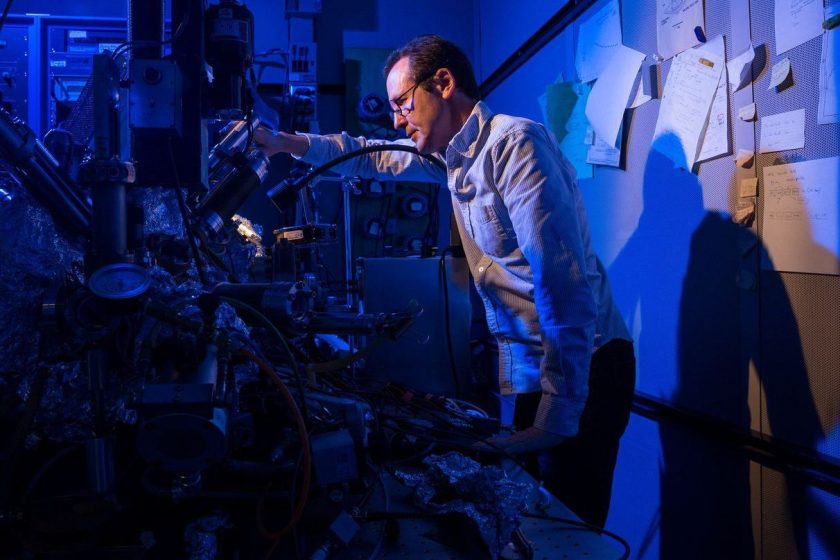
IBM just took a major step forward in the way humans store information at a minuscular level.
For the first time ever, the computing giant has demonstrated a way to put data on a single atom, in a paper published this week in Nature.
The groundbreaking research has significant future implications for how we store data, and would make any device with a storage drive—like computers and smartphones—much thinner and lighter. A digital catalog of 35 million songs, for example, could be stored on a credit-card sized drive, Quartz reports.
IBM’s concept basically translates the language of 0s and 1s that computers speak into atoms by magnetizing them. IBM researchers applied the principals of a hard drive, which has two polar ends like North and South, to individual atoms of holmium. The rare element naturally creates a strong magnetic field and its atoms stay in which ever pole they’ve been switched to.
While the research team created an atomic hard drive that only stores 2 bits of info, the concept could be scaled up to condense hard drives by 1,000 times. “You can now play around with these single-atom magnets, using them like Legos, to build up magnetic structures from scratch,” the paper’s author Fabian Natterer told Nature.
—RealClearLife
This article appeared in an InsideHook newsletter. Sign up for free to get more on travel, wellness, style, drinking, and culture.